Do you have a question about the Danfoss vlt aqua and is the answer not in the manual?
| Supply Voltage | 200-240V, 380-500V, 525-600V |
|---|---|
| Enclosure | IP20 |
| Features | Energy optimization |
| Approvals | CE, UL, cUL |
| Input Voltage Range | 200-240V, 380-500V, 525-600V |
| Output Voltage Range | 0 to supply voltage |
| Protection Features | Overvoltage, Undervoltage, Overcurrent, Short circuit, Ground fault |
| Communication Interfaces | PROFIBUS |
| Cooling Method | Air-cooled |
General safety precautions and warnings for installation and operation.
General warnings regarding electrical hazards and necessary waiting times.
Cautionary notes regarding DC link capacitors and waiting periods before service.
Precautions to prevent the motor from starting unintentionally.
Instructions for correctly installing the safe stop functionality.
Details on the Safe Stop function and its safety category requirements.
Initial setup steps including LCP, AMA, and programming.
Preparation and considerations for the mechanical installation process.
Details on cooling methods and required airflow rates for the drive.
Covers various aspects of the electrical installation process.
Details on cabling, fusing, and AC line input connections.
Considerations for proper grounding for electromagnetic compatibility.
Information on fuses for branch circuit, short-circuit, and overcurrent protection.
Further details and diagrams for electrical installation.
Diagram showing electrical terminals and control cable wiring.
Steps for performing the final setup and testing of the drive.
Guide for entering motor data into the drive's parameters.
Procedure for activating and performing the Automatic Motor Adaptation.
Configuration of speed limits and ramp times for the drive.
Information on the electronic thermal relay for motor overload protection.
Instructions for operating the Graphical Local Control Panel (GLCP).
Explanation of the Quick Menu for fast parameter setup.
Function of the Main Menu for accessing all parameters.
Instructions on how to access and view the alarm log.
Enables GLCP control and motor start.
Function to stop the connected motor.
Enables control via terminals or serial communication.
Function to reset the drive after an alarm trip.
Instructions for operating the Numeric Local Control Panel (NLCP).
Step-by-step guide for changing parameter data values.
Procedures for resetting the drive to its default settings.
Instructions for connecting a PC to the drive for control and programming.
Information on PC software tools available for drive configuration.
Overview and features of the MCT 10 PC-based configuration tool.
Details on the MCT 10 Set-up Software's capabilities and uses.
Steps to save drive parameter settings to a PC.
Steps to load drive parameter settings from a PC.
Introduction to parameter setup and the organization of parameter groups.
Lists and describes the various parameter groups available for configuration.
How to access and utilize parameters through the Quick Menu.
Details the basic parameters required for quick drive setup.
Accessing and using function setups for various applications.
How to access and navigate the main menu for parameter programming.
How to select parameter groups and individual parameters within the main menu.
Explanations of frequently used parameters for common applications.
Overview of all parameters available in the main menu.
Parameters related to drive operation and display configuration.
Defining the drive's operating mode (open-loop or closed-loop).
Setting the primary operating mode of the drive.
Activating and performing the Automatic Motor Adaptation function.
Parameter group for configuring operational limits and warnings.
Parameter group for configuring digital inputs and outputs.
Configuration options for various digital input functions.
Parameters for configuring the functions of digital outputs.
Parameters for configuring the functions of the drive's relays.
Defining specific functions for each relay output.
Parameter group for configuring analog inputs and outputs.
Overview of the drive's built-in protection features.
How alarms and warnings are signaled and indicated.
List of alarm and warning codes with descriptions and parameter references.
List of alarms and warnings with parameter references.
Troubleshooting steps for a low 10V supply warning.
Troubleshooting steps for a live zero error on analog inputs.
Troubleshooting steps for a no motor connection warning.
Troubleshooting steps for mains phase loss or voltage imbalance.
Warning or alarm for DC overvoltage condition.
Warning or alarm for DC undervoltage condition.
Warning or alarm for inverter overload condition.
Warning or alarm for motor overload temperature condition.
Warning or alarm for motor thermistor overtemperature.
Warning or alarm for exceeding the torque limit.
Warning or alarm for overcurrent condition.
Alarm indicating a ground fault on motor phases.
Alarm indicating a short circuit on motor terminals.
Alarm indicating heatsink overtemperature.
Alarm indicating missing motor phase U.
Alarm indicating missing motor phase V.
Alarm indicating missing motor phase W.
Warning or alarm when output frequency exceeds limits.
Warning or alarm indicating mains power failure.
Alarm indicating an internal fault within the drive.
Warning for low 24V supply to the control card.
Warning for low 1.8V supply on the control card.
Warning if motor speed is outside specified limits.
Warning when the current exceeds the set limit.
Warning when the output frequency reaches its maximum limit.
Warning when the voltage exceeds its limit.
Warning, alarm, or trip due to control card overtemperature.
Alarm indicating that the safe stop function has been activated.
Alarm indicating issues with the power card temperature.
Warning/alarm for PTC 1 safe stop activation.
Alarm indicating a dangerous failure with safe stop trip lock.
Alarm indicating a detected no-flow situation.
Alarm indicating a dry pump condition.

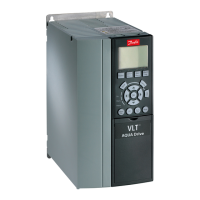
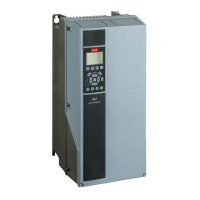


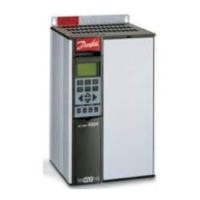
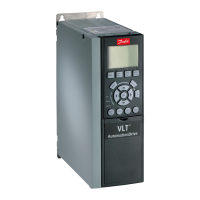
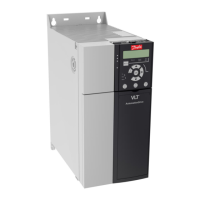
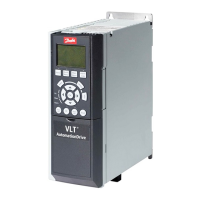

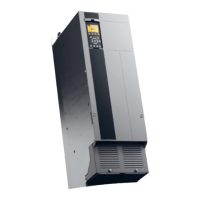

